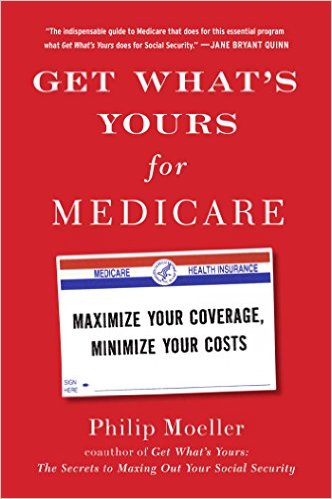Medicare Pitfalls and Enrollment Problems
What you don't know can cost you dearly
The following information comes from the book Get What's Yours For Medicare by Philip Moeller. We highly recommend that you purchase this book in the months before you reach age 65. Stout Bowman & Associates has no affiliation with Mr. Moeller or his publisher.
Also, note that these are only the pitfalls associated with your enrollment in Medicare. Far beyond the scope of this article and our practice are the myriad of pitfalls brought about by choosing your Medicare path (original Medicare or Medicare Advantage), your additional coverage, the specific insurer you choose, and your experience in dealing with Medicare on coverage issues. If you take nothing else from this article, it should be that this is not a ten-minute decision, and that you should plan to spend days, probably weeks, thoroughly researching these issues.
Caveats
- Sign up at the right time to avoid penalties and the loss of coverage
- Choose from one of two Medicare paths: 1) Original Medicare (with or without Medigap supplemental coverage) and a Part D drug plan, or 2) Medicare Advantage (Part C), which usually comes with a Part D drug plan bundled in
- Understand what Medicare covers and how to get the most from whichever coverage plan you choose
And now for some things you MUST know about Medicare enrollment, in no particular order
- There is no family coverage under Medicare — each person must apply individually.
- If you miss your enrollment period, there may be a considerable delay before you can apply.
- Medicare Advantage plans normally restrict coverage to doctors, hospitals and other caregivers in their provider network. Original Medicare covers any provider that accepts Medicare.
- You need to contact Social Security and not Medicare to enroll in Medicare.
- You must have Medicare Parts A and B (and a letter or Medicare card from Social Security with effective dates specified) before you can acquire a Part B Supplement, Part C (Medicare Advantage) or Part D (prescription coverage) plan; be sure to allow time for the receipt of this documentation when planning for your Part C or Part D application.
- Medicare Part B pays only 80% of doctor, equipment and other outpatient expenses. You pay the rest. Forever.
- Medigap (Medicare Supplement) insurers may not have to sell you a policy, or may charge you a higher premium if you don't buy one the first time you are eligible, if your health does not meet their underwriting standards for the basic premium. This also applies if you want to upgrade to a Supplement plan with higher benefits. Therefore, it might be prudent to get the plan with the highest benefits you can afford the first time you become eligible.
- There is a 7-month Initial Enrollment Period (IEP) when you turn 65; 3 months before your birth month, your birth month, and then 3 months after your birth month. Medicare coverage begins depending upon the month you sign up — make sure your current health coverage does not end before your Medicare coverage begins. For example, if you turn 65 in September:
Sign-up Month Coverage Begins June September 1 July September 1 August September 1 September October 1 October December 1 November February 1 December February 1 - There is a separate 6-month enrollment period for Medigap (Medicare supplement) starting when you enroll in Part B. Normally, insurers must sell you a Medigap policy at their standard premium regardless of your health condition if you apply during this period.
- Beyond your IEP, there is a general enrollment period from January 1 through March 31 of each year. Waiting beyond your IEP could trigger lifetime premium surcharges (the Part B penalty is 10% for each full year, the Part D penalty is 1% per month). For example, if you wait two years after your IEP, and do not have a valid Part B waiver situation (e.g., you were covered under your employer plan), you will pay Medicare 20% more than their standard premium every year, for life.
- There is also a Special Enrollment Period (SEP) available if you initially waived your Part B coverage due to receiving health coverage under an employer plan. This period consists of the 8 months following the month the employer or union group health plan coverage ends, or when the employment ends — whichever is first. However, note that while you may sign up for Medicare online during your IEP, if you are applying during your SEP you must do so by calling a Social Security office, request the forms, and then submit the required forms in person or through the mail (hint: you can find the forms online if you look for them, but you'll still have to print and fill them out by hand, and then mail or take them to a Social Security office). If you mail the forms, be sure to send them certified mail with a return receipt request so that you'll have a record of the date of their acceptance by Social Security.
Update: The Social Security Administration is now accepting Medicare Part B enrollment applications online for working individuals who qualify for a Special Enrollment Period (SEP). You can start the enrollment at the Social Security website (may require an account at ssa.gov) - Another form of premium penalty is an increased Part B premium for high earners, based upon their Modified Adjusted Gross Income (MAGI) on their tax return from 2 years prior (e.g., the 2019 premium will be based upon the MAGI on the 2017 tax return). These increases start at a MAGI of $85,000 for singles and $170,000 for a joint return (note that Medicare does not delve into the return to find out the income of the Medicare beneficiary, it just uses the return filed by that person). Therefore, if you retire from a high-paying job and apply for Medicare Part B, your premium will be based upon your income from two years prior to your retirement, not the income you have available to pay that year's premiums, and you'll pay that increase the next year also.
- There are many other enrollment periods, and special conditions that cover their applicability. If you do not sign up for Medicare Part B during your IEP, you'd better understand the parameters and restrictions of these other enrollment periods.
- If you are already receiving Social Security benefits when you turn age 65 (perhaps you started when you were first eligible at age 62), you should automatically be enrolled in Medicare Parts A and B by Social Security and receive your Medicare card; however, you don't have to accept the Part B coverage if you don't want it (Part A is free).
- If you are still working at 65, you can drop your employer plan and enroll in Medicare. However, you may not be able to re-enroll in your employer plan if you change your mind.
- If you work for an employer with fewer than 20 employees (100 employees for coverage for the disabled), then you MUST get Medicare coverage at age 65, because your group plan will stop being the primary insurer. This also applies to retiree health coverage because such plans are secondary to Medicare.
- You must be covered under an ACTIVE employer group plan to waive Part B without future penalty. Note that ACTIVE means that you (or your spouse if you're covered under their plan) are ACTIVELY working for that employer. The definition of ACTIVE does NOT include retiree health plans or COBRA plans. Therefore, in most cases, if you work beyond age 65 and waive Part B coverage, you must remember to apply for Part B well before your ACTIVE employer plan ends to avoid a penalty premium or coverage gap. COBRA coverage that is creditable (as good or better than Part D) can be used to waive Part D coverage.
- If you're on a retiree health plan, the plan determines what happens to any family member's coverage when you transition to Medicare. Check with your health benefits experts.
- If you have coverage from an HMO under the Federal Employees Health Benefits Program, you may not need to sign up for Part B. If you want to sign up for Part B later, though, you may incur a penalty.
- If you are 65 or older and file for Social Security, the government requires you to take Part A, which triggers your filing for Medicare. Once you've filed for Medicare, you cannot continue to make contributions to a Health Savings Account — in fact, you must stop contributions 6 months prior to the start of Social Security benefits or you may incur IRS penalties. Review this checklist on how to continue contributing to your HSA after turning 65 without running afoul of the IRS. We do cover other Medicare issues on our blog as well.
- What is NOT covered under Medicare Part B?
- Long-term care in nursing homes (only medically necessary care, with conditions, is covered)
- Dental, vision and hearing coverage
- A whole list of other medical procedures, equipment and supplies (acupuncture, general foot care, home-based 24-hour care, massage therapy, common medical supplies)
- With limited exceptions, any care received outside the United States (some Medigap and Medical Advantage plans offer emergency coverage for foreign travel). For a discussion of Medicare coverage while traveling, please read our blog article.
This was not meant to be a comprehensive examination of all the ramifications of applying for Medicare, nor advice on insurance products, but a quick summarization by a financial professional of the complexities that might affect planning for your retirement. More specialized advice is available at the Medicare Rights Center and the State Health Insurance Assistance Program.
Updated on August 18, 2018
The Centers for Medicare and Medicaid Services (CMS) updated their list of services allowed for Medicare Advantage plans to include assistive and preventative services such as:
- Adult day care programs
- Home aides to help with activities of daily living, like bathing and dressing
- Palliative care at home for some patients
- Home safety devices and modifications like grab bars and wheelchair ramps
- Transportation to medical appointments
You can read more about this in an article on the New York Times website.






